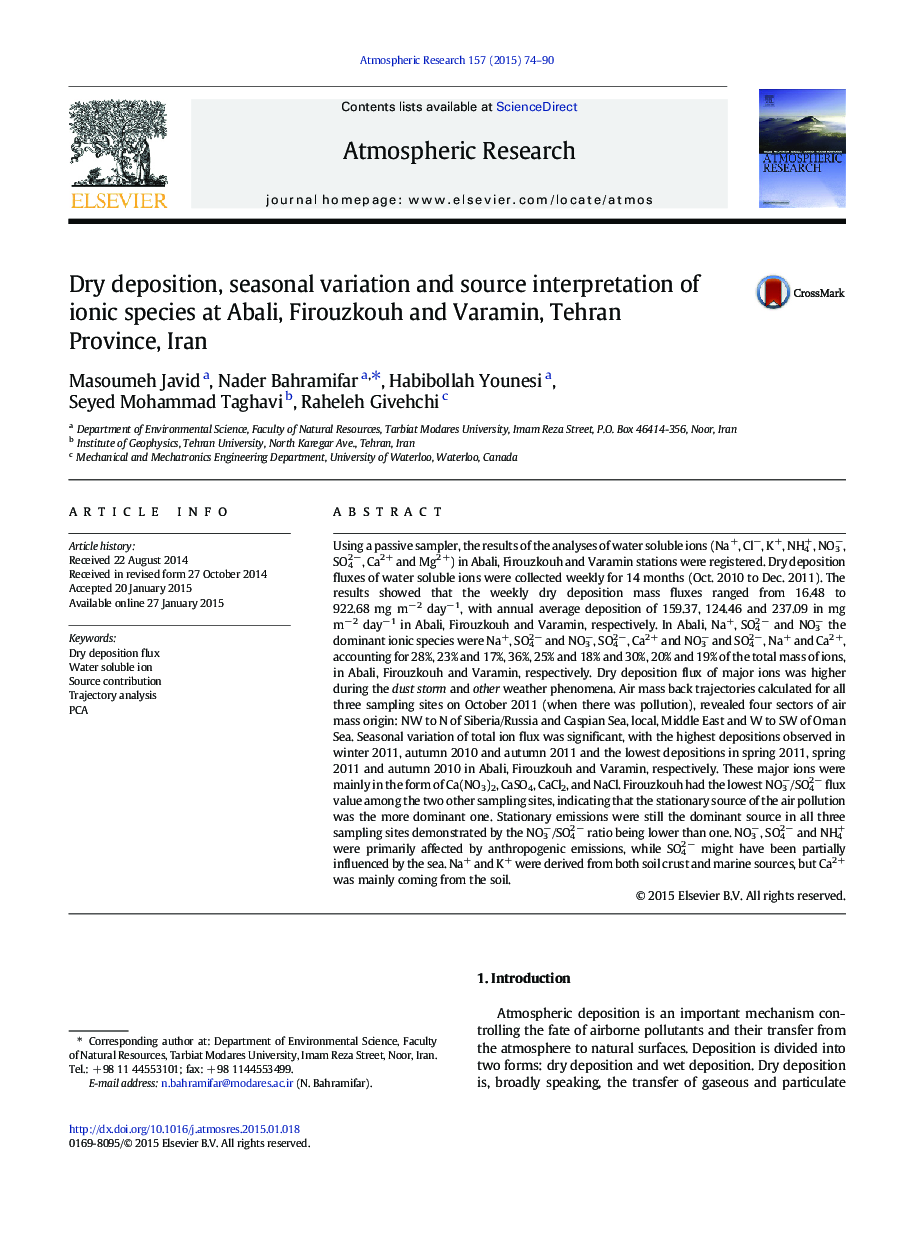| Article ID | Journal | Published Year | Pages | File Type |
|---|---|---|---|---|
| 4449801 | Atmospheric Research | 2015 | 17 Pages |
•We first report the temporal variation of dry deposition flux in Tehran.•Seasonal and site-specific variation of ionic species was investigated.•Source interpretation was by air mass back trajectory model and PCA.•Dry deposition flux of major ions was higher during dust storm.•The high deposition was observed in winter and autumn.
Using a passive sampler, the results of the analyses of water soluble ions (Na+, Cl−, K+, NH4+, NO3−, SO42 −, Ca2 + and Mg2 +) in Abali, Firouzkouh and Varamin stations were registered. Dry deposition fluxes of water soluble ions were collected weekly for 14 months (Oct. 2010 to Dec. 2011). The results showed that the weekly dry deposition mass fluxes ranged from 16.48 to 922.68 mg m− 2 day− 1, with annual average deposition of 159.37, 124.46 and 237.09 in mg m− 2 day− 1 in Abali, Firouzkouh and Varamin, respectively. In Abali, Na+, SO42 − and NO3− the dominant ionic species were Na+, SO42 − and NO3−, SO42 −, Ca2 + and NO3− and SO42 −, Na+ and Ca2 +, accounting for 28%, 23% and 17%, 36%, 25% and 18% and 30%, 20% and 19% of the total mass of ions, in Abali, Firouzkouh and Varamin, respectively. Dry deposition flux of major ions was higher during the dust storm and other weather phenomena. Air mass back trajectories calculated for all three sampling sites on October 2011 (when there was pollution), revealed four sectors of air mass origin: NW to N of Siberia/Russia and Caspian Sea, local, Middle East and W to SW of Oman Sea. Seasonal variation of total ion flux was significant, with the highest depositions observed in winter 2011, autumn 2010 and autumn 2011 and the lowest depositions in spring 2011, spring 2011 and autumn 2010 in Abali, Firouzkouh and Varamin, respectively. These major ions were mainly in the form of Ca(NO3)2, CaSO4, CaCl2, and NaCl. Firouzkouh had the lowest NO3−/SO42 − flux value among the two other sampling sites, indicating that the stationary source of the air pollution was the more dominant one. Stationary emissions were still the dominant source in all three sampling sites demonstrated by the NO3−/SO42 − ratio being lower than one. NO3−, SO42 − and NH4+ were primarily affected by anthropogenic emissions, while SO42 − might have been partially influenced by the sea. Na+ and K+ were derived from both soil crust and marine sources, but Ca2 + was mainly coming from the soil.
